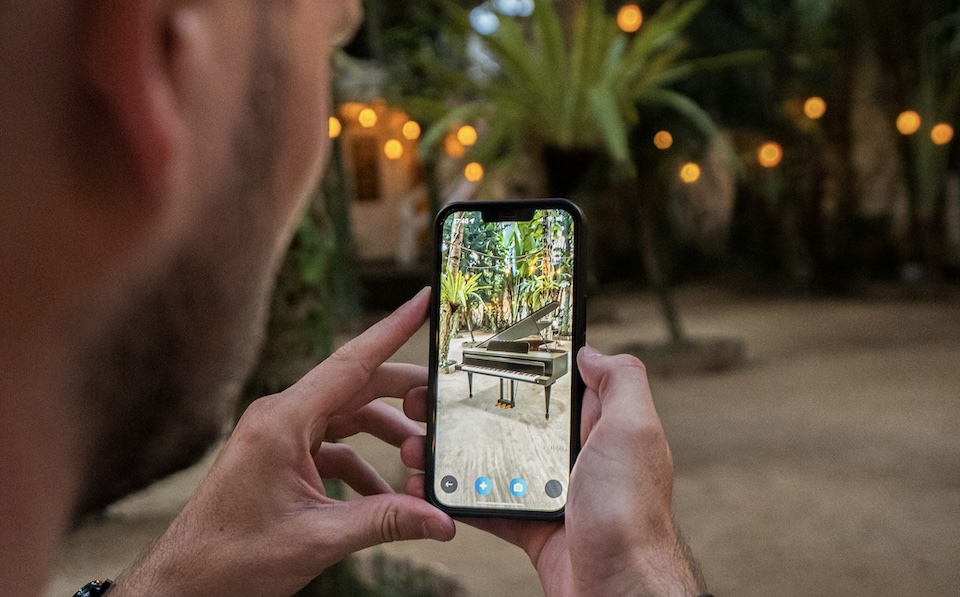How Augmented Reality Is Quietly Reshaping Culture
Extending a brand's personality in ways that matter

Buried. Ignored. Written off as a gimmick. That’s where augmented reality has lived in too many pitch decks.
Suggest it to clients, and you’ll too often hear: “That’s a great add-on, maybe we can squeeze it into scope” or “We’ll revisit if there’s leftover budget.”
But while the industry sidelined it, AR was quietly reshaping culture. Not in headsets. Not in some far-off future. It’s happening right now in the way millions create, share and connect every day. AR’s time is now.
From Watching to Doing
So why does it work? Because AR doesn’t just put your brand in front of people, it puts them inside it. It gives them something to do, not just something to watch. People are trained to ignore traditional ads. Scroll past. Skip. Close. But with AR, there’s no banner blindness. You’re playing with it, showing your friends, making it your own. That’s how you build a lasting memory, not just earn a fleeting impression.
Brands Getting AR Right
Major brands are proving the point. Fenty Beauty, L’Oréal and e.l.f. have used TikTok’s AR tools to create face-tracking effects that let users try on products in real time. Eyewear brands Oakley and Warby Parker have created shareable moments, letting people showcase frames to friends before they ever step into a store.
And we’ve seen it firsthand, too. For Red Lobster, we turned fans into walking, talking Cheddar Bay Biscuits. It wasn’t just a visual gag; it tapped into one of the most beloved icons on their menu. Within days, the “Biscuit Head” effect was trending in TikTok’s effects tab, generating more than 11,000 organic posts with zero paid promotion behind it. People didn’t just see the brand—they lived it. That’s the kind of cultural spark AR creates when it’s woven into the idea from the start.
@redlobster Cheddar Bay brain activated. Tap to try this new filter and make everyone a biscuit head! #biscuits #ar #filter ♬ Write This Down (Instrumental) – SoulChef
Different industries, same play: Give people a way to be a part of the brand and they’ll carry it further than any media buy.
Why Now?
The conditions that once kept AR buried at the bottom of the pitch deck have flipped. The audience is here. The tools are ready. The path from idea to launch has never been shorter. TikTok and Snapchat together reach billions of monthly users. AR is already baked into how they connect, share and play. No learning curve. People know exactly what to do when an effect shows up in their feed.
The production side has leveled up, too. Effect House and Lens Studio now come with AI features that speed up asset creation and customization.
And because no marketing conversation in 2025 is complete without an “AI” mention, here’s the upside. Tools like Meshy.AI can spin up a 3D model in a fraction of the time old workflows took. When we built the “Biscuit Head” prototype, we used AI modeling to get a demo off the ground fast. Proof that ideas don’t have to sit in a deck anymore. They can be in people’s hands almost instantly.
No More Extras: Make AR the Headline
Once the afterthought, AR has earned its place at the top. It earned a promotion. Success today comes from the concepts that feel native to the platform and invite people in from the start.
Where do we go from here?
- Start Early. AR only works when it’s part of the idea, not something added on at the end. Brands that weave AR into campaign planning from day one get experiences that feel natural, not forced.
- Fit the brand and platform. The best AR experiences don’t feel like ads. They feel like an extension of the brand’s personality. What works on TikTok might not work on Snapchat and vice versa. AR should feel like it belongs in the feed as much as the brand it represents.
- Build for participation. AR isn’t about being seen, it’s about shared experience. The ideas that win are the ones that invite people to play, remix and share. When the audience becomes part of the story, the brand clicks in culture.
Do this, and AR stops being a test. It becomes the headline, not the footnote.



 Events
Events